When can the police use a Taser?
- Published
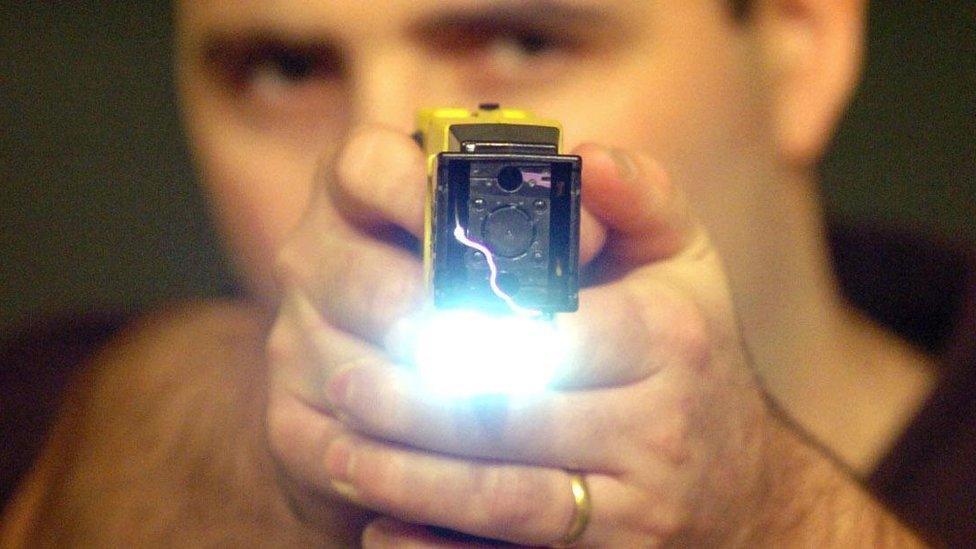
Black people are three times more likely than white people to be involved in Taser incidents, government figures suggest.
Electric stun guns were drawn, aimed or fired 38,000 times in England and Wales over a period of five years.
In more than 12% of cases Tasers were used against black people, who make up about 4% of the population, Home Office figures suggested.
But when can the police use one?
Code of Ethics
Officers told Newsbeat they are asked to follow something called the National Decision Model - a bit like a checklist.
It looks fairly complicated and they can be expected to work through it in stressful situations in a split second.
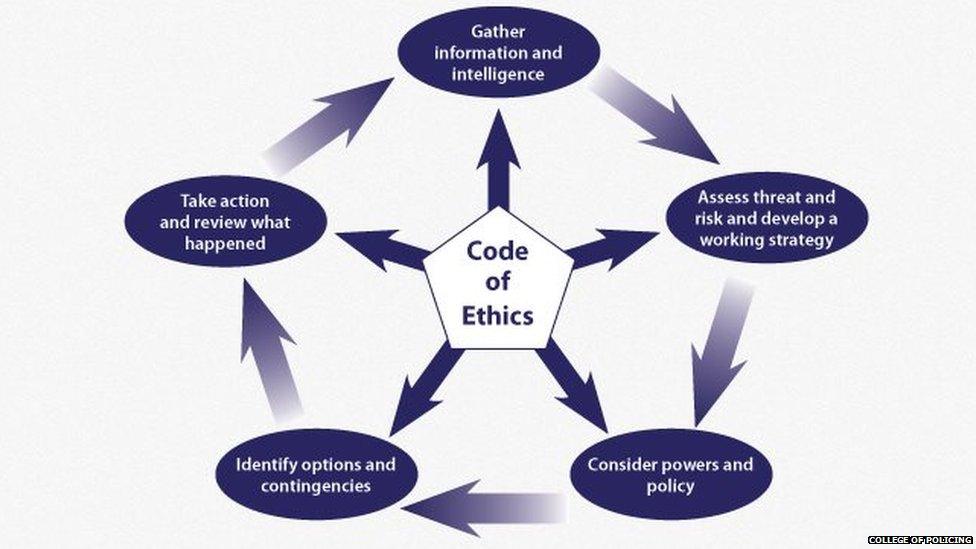
In short they have to decide whether using the Taser is legal, proportionate and necessary.
The National Police Chiefs' Council - which represents senior police - say that "officers who are trained and equipped with Taser must decide on the most reasonable and necessary use of force in the circumstances.
"The level of force used must be proportionate to achieve the objective and officers are individually accountable in law for the amount of force they use on a person," they say.
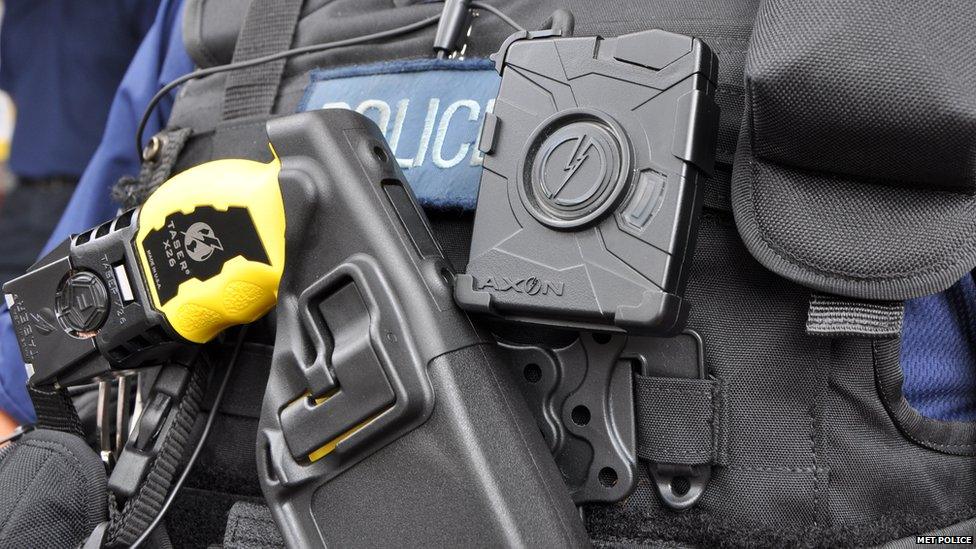
Shout 'Taser' and show your stun gun
Each police force is responsible for training officers who carry Tasers.
The College of Policing sets the standards for the training.
They told Newsbeat that if possible an officer should give an "oral and visual warning" - in non-police speak that means shouting "Taser, Taser" and showing you have one.
Tasers are bright yellow and can give a warning crackle which shows the flashing of the charge. You can see it in the main picture on this article.
They also have a target light that shows where the Taser is aiming.
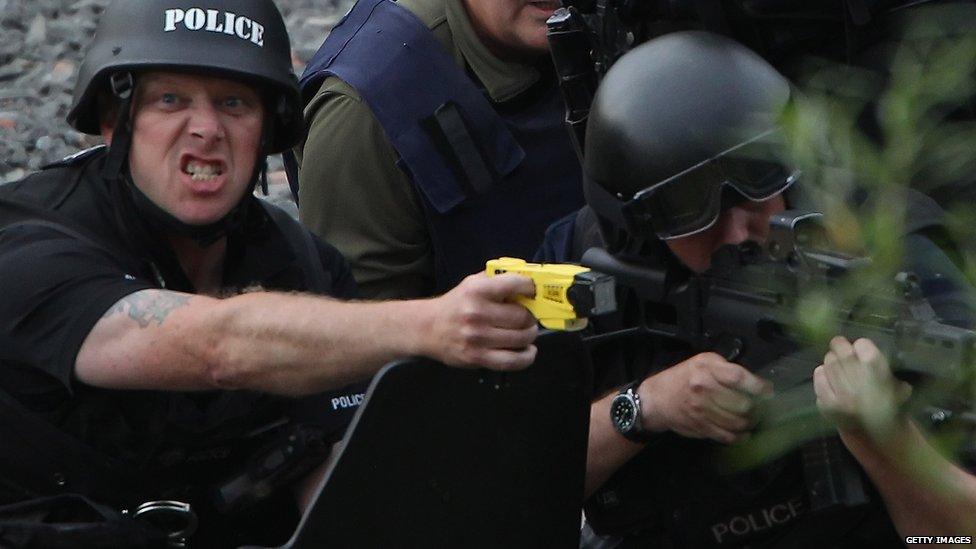
Police try to negotiate with Raoul Moat in the village of Rothbury in 2010
Risks of using a Taser
The police are trained to think about risk factors. These include head injuries if someone falls, avoiding "sensitive areas," and vulnerable people and children.
Technically there is nothing to stop a police officer using a Taser on a child if they feel the risk warrants it.
However, the body which represents senior police officers admits there is "an increased risk of cardiac arrhythmia and barb penetration in children and thin adults".
By that they mean it can make someone's heart beat irregularly which can lead to palpitations, feeling dizzy, fainting and being short of breath. Barb penetration is when the sharp metal end of the Taser goes into the body.
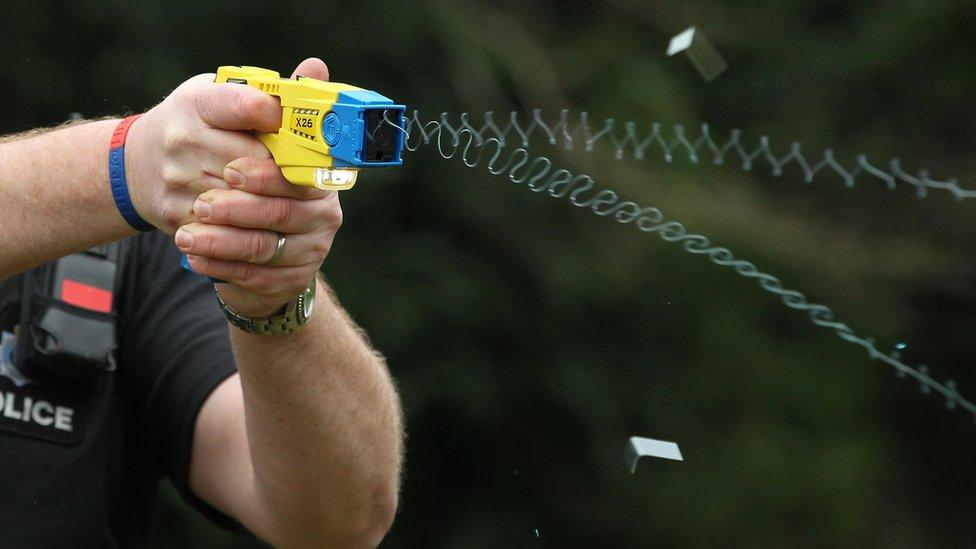
A Taser being fired showing the wires that the charge travels along - at the end there are barbs which attach to the suspect
'I've been targeted'
We spoke to Azur in South London who thinks he's been targeted for being black.
"I have been Tasered twice and I haven't done nothing wrong. I have just been in the wrong place at the wrong time.
"Because I was the only black guy there I was the one getting Tasered. Sounds bad but it's true."
We asked him how it feels to be Tasered and where it falls on the pain scale?
"10 but it's mostly shock. You can't believe it. They don't say 'I'm going to Taser you now,' they just go like bzzz. They just Taser you.
However Azur does think think Tasers can be a good tool for the police to have.
"They should have Tasers but they should be more responsible, don't just Taser black guy, he might not have done anything wrong.
"When I am on my own I feel scared.
"I have been Tasered many times and I work for a living.
"I get up everyday, I work as a chef, but when I'm in my own clothes the police don't want to hear that.
"As long as you fit the description... alright mate you can do with a Tase [sic], go on Tase him - sshhppp."
Deaths caused by Tasers
There have been cases where Tasers used by the police have contributed to people dying.
This year an inquest found an unarmed man died partly as a result of being "inappropriately and unreasonably" Tasered and restrained by police officers.
Jordon Begley, 23, died in hospital after being Tasered in Manchester following a row with neighbours in 2013.
Each police force must keep a record of Taser use, which is where these figures come from.
The National Police Chiefs' Council insists that specialist Taser officers act fairly regardless of race.
"Every use of Taser is reported and scrutinised by a supervisor and officers are personally accountable to the law each time their Taser is drawn.
"Officers receive specialist training that helps them to determine the best course of action in resolving a violent or potentially violent situation. Taser is one of many tactical options a police officer can use.
"In 80% of Taser uses in the UK, the mere presence of the device is enough to resolve the violent or potentially violent situation without any force being used."
Follow @BBCNewsbeat, external on Twitter, BBCNewsbeat, external on Instagram, Radio1Newsbeat, external on YouTube and you can now follow BBC_Newsbeat on Snapchat